Graffix Video Card 3d Design
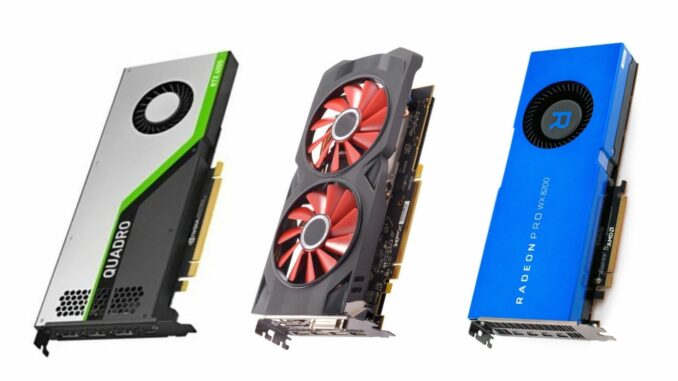
Please note: As an Amazon Associate I earn from qualifying purchases. I also work with other affiliate partners and may be compensated from the links below. Details here.
If your work involves creating visual effects, graphic design or you work in the Animation and Industrial design industries then you will agree that your workstation is the most important tool in your Arsenal.
This becomes even more apparent when you delve into 3D rendering and modeling. Yes, I know a creative mind and great design skills are crucial, but with the right hardware, you can project what's in your mind to your screen with pinpoint accuracy.
More specifically, you need the best graphics card for 3D rendering and modeling to get the best out of your designing software and boost productivity when working on complex designs that need high processing powers.
That's why today, we will be taking a closer look at the 12 best graphics cards for 3D rendering and modeling of 2020, so you can choose the best GPU for your needs.
Skip to:
- Best Graphics Cards for 3D Rendering and Modeling for Professionals
- Best Graphics Cards for 3D Rendering and Modeling for Advanced Users
- Best Graphics Cards for 3D Rendering and Modeling for Beginners
- Buyer's Guide
Best Graphics Cards for 3D Rendering and Modeling Professionals
At this stage, you are a recognized 3D modeling and rendering expert with a workload of highly complex designs that need to be completed as soon as possible. You cannot afford to waste 3 hours rendering a model that could be finished in half the time.
Now it's time to invest in the best of the best graphics card and we have just the perfect solutions:
1. AMD Radeon Pro WX 8200
CUDA Cores: 3584 | Base Clock: 1200MHz | Boost Clock: 1500MHz | Memory: 8GB HBM2 | Memory Clock Speed: 2000MHz | Memory Bus: 2048-bit | TMUs: 224 | ROPs: 64 | Max. Monitors Supported: 4 | Power Consumption: 230W | Dimensions: 10.5 x 4.4 in
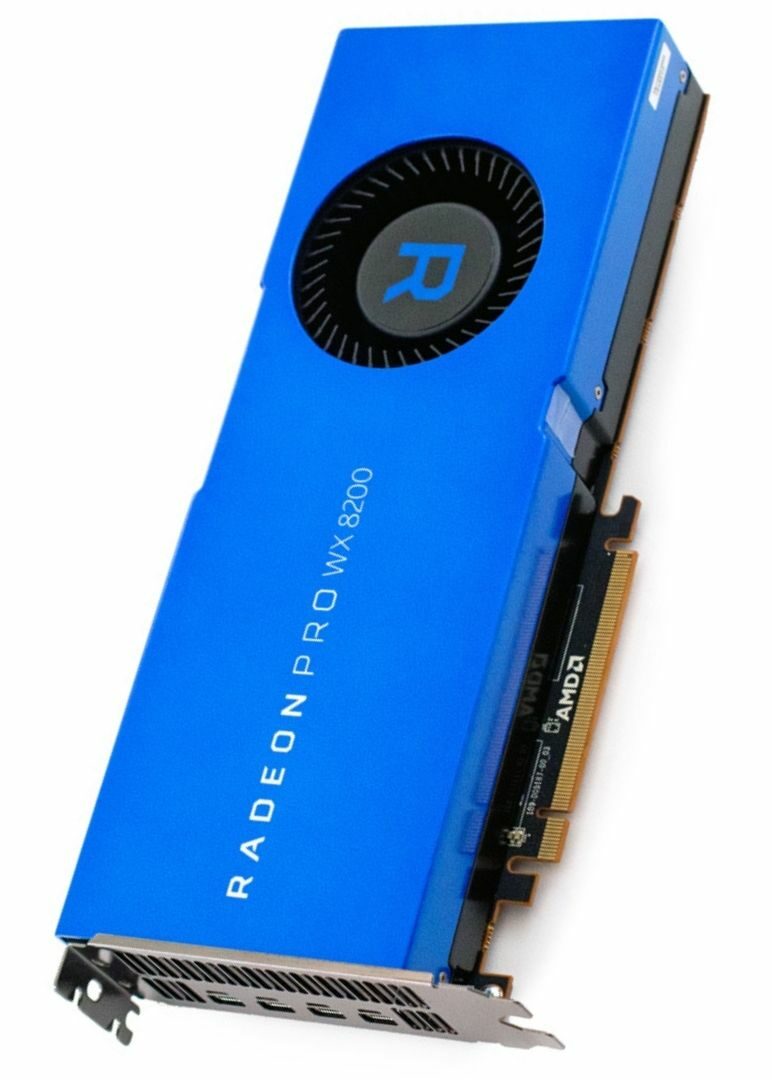 REASONS TO BUY
REASONS TO BUY
- Top notch performance
- Enough memory for difficult 3D tasks
- Comparable performance to WX 9100 at much lower price
- Outperforms the Nvidia Quadro P4000
- Supports EEC memory
REASONS TO AVOID
- Power hungry
- Higher price
Our Rating : 9.8 / 10
AMD never ceases to surprise me with how they package such a rich set of features and still offer their GPUs at such cost-effective prices.
3,584. That's how many cores the Radeon Pro WX 8200 ships with. Tell me you won't feel a difference in your rendering process. There is absolutely no model that you can't render with this GPU. It doesn't matter the amount of detail in it, the rendering quality, or even if your workstation is performing other tasks.
But that's not even the real deal. The Radeon Pro WX 8200 is created using the Vega architecture which is currently the holy grail of AMD workstation GPUs.
This GPU has a boost clock speed of 1500MHZ but that might as well read 2000MHZ because when compared to the Quadro P4000, the WX 8200 comes out top in terms of performance.
The only place where the P4000 outshines this AMD workstation GPU is VRAM. The Radeon Pro WX 8200 only offers 8GB of HBM2 VRAM. This has even been a major talk point among industry experts but, in my opinion, the decreased VRAM is the reason this GPU has managed to stay below the $1000 mark.
But, you will not really appreciate that fact until you learn that this GPU comes with error correction features. You will rarely, if ever, find a GPU with this feature at that price.
This GPU is an absolute beast and even its power consumption will attest to that. It draws 230 watts which is the second-highest of the WX series and almost on the same level as the RX Vega 64.
If you're looking for a professional graphics card that offers high-end performance while not breaking the bank, the the AMD Radeon Pro WX 8200 is an excellent choice.
View On Amazon
Related reading: Best SSDs Under $100
2. PNY NVIDIA Quadro RTX 4000
CUDA Cores: 2304 | Base Clock: 1005MHz | Boost Clock: 1545MHz | Memory: 8GB GDDR6 | Memory Clock Speed: 13000MHz | Memory Bus: 256-bit | TMUs: 144 | ROPs: 64 | Max. Monitors Supported: 4 | Power Consumption: 160W | Dimensions: 10.5 x 4.4 x in
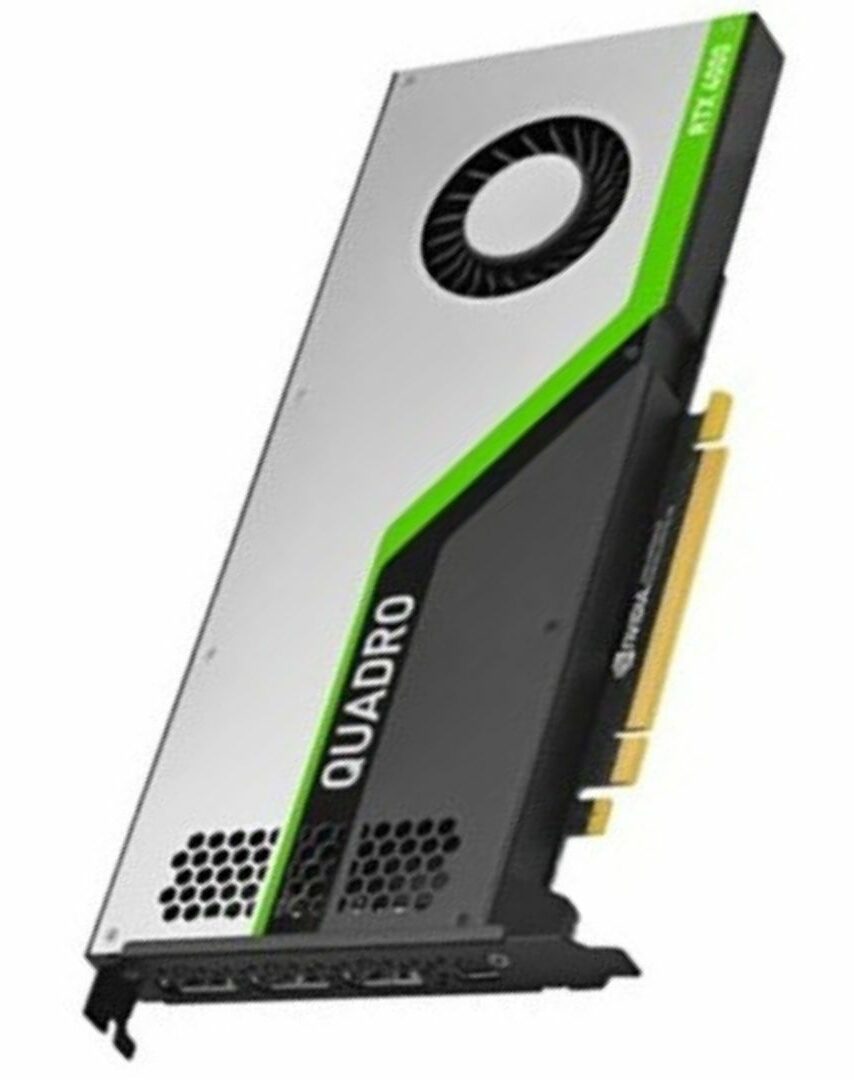 REASONS TO BUY
REASONS TO BUY
- Outperforms the P4000 and P6000
- 8GB of VRAM
- Optimized for CAD applications
- Low power consumpition
- Supports ray tracing
- Single slot GPU
REASONS TO AVOID
- Higher price
Our Rating : 9.7 / 10
The PNY Nvidia Quadro RTX 4000 may be on the higher end of the price spectrum but it offers great value for your buck. It is manufactured using the Turing architecture which means that real-time ray tracing is one of its dominant features.
This GPU clocks at 1005MHZ core speed but when you feed it with a heavy load to process the clock speed can rise up to 1545MHZ.
The Quadro 4000 has been optimized for creative work and so if you are using CAD applications such as AutoCAD and Solidworks, you will notice that it accelerates the plugins and filters in these software in a very noticeable way and increases performance in areas such as viewpoint and animation.
It also facilitates more accurate anti-aliasing and wireframe drops. The result is increased rendering speeds and high-quality renderings that are very close to reality.
Another reason why you will find the Quadro RTX 4000 graphics card great is that it offers adequate VRAM space of 8GB to store files that are needed quickly.
Moreover, the RTX 4000 has 2304 CUDA cores for fast speed rendering, 288 Tensor cores, and 36 RT cores. The RT cores accelerate the computation of how light and sound travel in 3D environments to up to 10 Giga rays per second.
One other feature of the Quadro RTX 4000 that needs a mention is that it can unlock FP16 performance which is usually reserved for gaming GPUs. This directly results in increased performance of all your 3D operations.
Again, something that will probably surprise you is how low the power consumption for this graphics card is. 160W may look like a big number but compared to the performance that the RTX is offering, it's a great bargain.
View On Amazon
3. Asus ROG STRIX GeForce RTX 2080Ti
CUDA Cores: 4352 | Base Clock: 1350MHz | Boost Clock: 1665MHz | Memory: 11GB GDDR6 | Memory Clock Speed: 14000MHz | Memory Bus: 352-bit | TMUs: 272 | ROPs: 88 | Max. Monitors Supported: 4 | Power Consumption: 260W | Dimensions: 12 x 5.1 x 2.1 in
 REASONS TO BUY
REASONS TO BUY
- Great all-round graphics card
- Offers 11GB of VRAM
- Supports DLSS and Ray Tracing
- Runs cool and quiet
- High bandwidth
REASONS TO AVOID
- Premium price
Our Rating : 9.6 / 10
Coming in at number three is the ASUS GeForce RTX 2080 Ti. This beast comes with 4532 CUDA cores which promise unmatched rendering with amazing visuals and frame rates. It can also handle up to 4k picture quality with ease.
As with other GPUs in the RTX series, the main selling point on this graphics card is the real-time ray tracing. The only difference is the accuracy and efficiency that the RTX 2080Ti executes the technology.
It comes with almost double the ray tracing hardware of the RTX 2080 that can deliver up to 10 Giga rays per second of ray tracing acceleration. The inclusion of the DLSS hardware means you can enjoy the photorealistic lighting of ray tracing without suffering a drop in frame rates. It also has almost double the graphics processing power.
The Nvidia RTX 2080ti has a memory bandwidth of 616Gbps that facilitates the fast transfer of data from the GDDR6 VRAM to the GPU. The available space is 11GB of GDDR6 VRAM. This GPU has a boost clock speed of 1635MHZ. This can be further overclocked through a self -implemented overclock.
Again, what's interesting is that even with such high processing power, the power consumption of the RTX 2080Ti is not much higher than the preceding cards. It's about 260 Watts which is 10 more watts than the GTX 1080 Ti.
Like I mentioned before, this is not the GPU to use if you have a mid-range workstation. You need to have a state of the art workstation that can fully exploit the available processing power of the RTX 2080Ti.
View On Amazon
4. AMD Radeon Pro WX 7100
Stream Processors: 2304 | Base Clock: 1188MHz | Boost Clock: 1243MHz | Memory: 8GB GDDR5 | Memory Clock Speed: 7000MHz | Memory Bus: 256-bit | TMUs: 144 | ROPs: 32 | Max. Monitors Supported: 4 | Power Consumption: 130W | Dimensions: 15 x 9.7 x 3 in
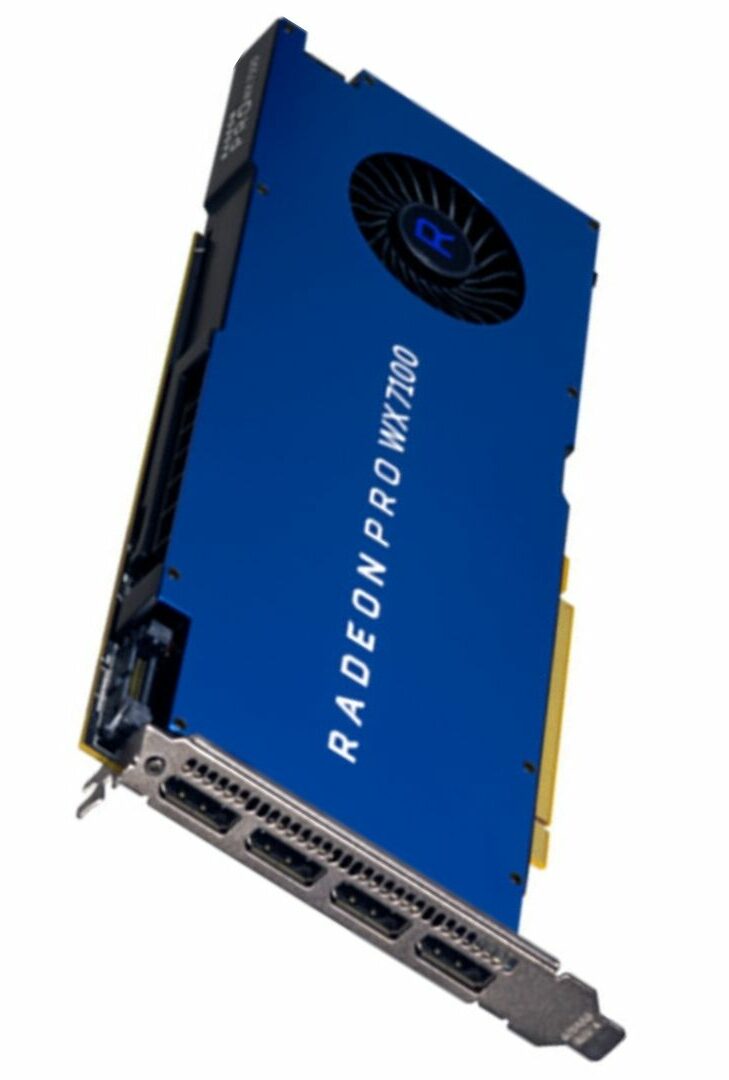 REASONS TO BUY
REASONS TO BUY
- Excellent price to performance ratio
- Supports up to 4x 4k screens
- Single-slot form factor
- 8GB of VRAM
- Also good for gaming
REASONS TO AVOID
- Needs proper cooling
- Doesn't support Ray Tracing
Our Rating : 9.4 / 10
The AMD Radeon Pro WX 7100 is a great GPU from the WX series and is well suited for visualization, simulation, and rendering at the professional level.
But what will catch your attention is the price of this Graphics card. It's hard to believe that the card is on the same competing lever as other higher priced Nvidia solutions that we are recommending for 3D modeling and rendering experts.
The GPU is made using the game-changing Polaris architecture and is the recommended solution for 3D works geared towards virtual reality.
One reason for this is that its 2304 streaming processors are more than capable of handling the process of stitching multiple high-quality videos from cameras at different angles which is the standard process if you want to create an immersive VR experience.
Then there is the fact that this GPU has been optimized to provide the best results when using popular modeling and rendering tools such as AutoCAD and Solidworks.
Moreover, AMD reached out to industry leaders such as Nuke, a visual effect application, and rendering applications like Octane-render and V-ray to make these software compatible with the GPU.
If you use multiple monitors for rendering as is the case with most experts, then you will have no trouble accelerating the graphics in each one of them using the Radeon Pro WX 7100. It doesn't matter if they all have a 4K video playback.
As with almost every other workstation GPU, the AMD Radeon Pro WX 7100 isn't built for gaming. But if you like to unwind with a game after a whole day of 3D work it won't disappoint.
The other thing you will love about this card is its modest power consumption compared to its performance. The graphics card uses a 6-way PCIe power connector and does not add stress to your power supply unit.
The WX 7100 is a great and cheap alternative over the Nvidia P4000 that I will be reviewing next, unless you require CUDA for your professional work.
View On Amazon
You may also like: Best CPUs Under $300
5. PNY Nvidia Quadro P4000
CUDA Cores: 1792 | Base Clock: 1202MHz | Boost Clock: 1480MHz | Memory: 8GB GDDR5 | Memory Clock Speed: 7604MHz | Memory Bus: 256-bit | TMUs: 112 | ROPs: 64 | Max. Monitors Supported: 4 | Power Consumption: 105W | Dimensions: 9.49 x 4.37 x 0.75 in
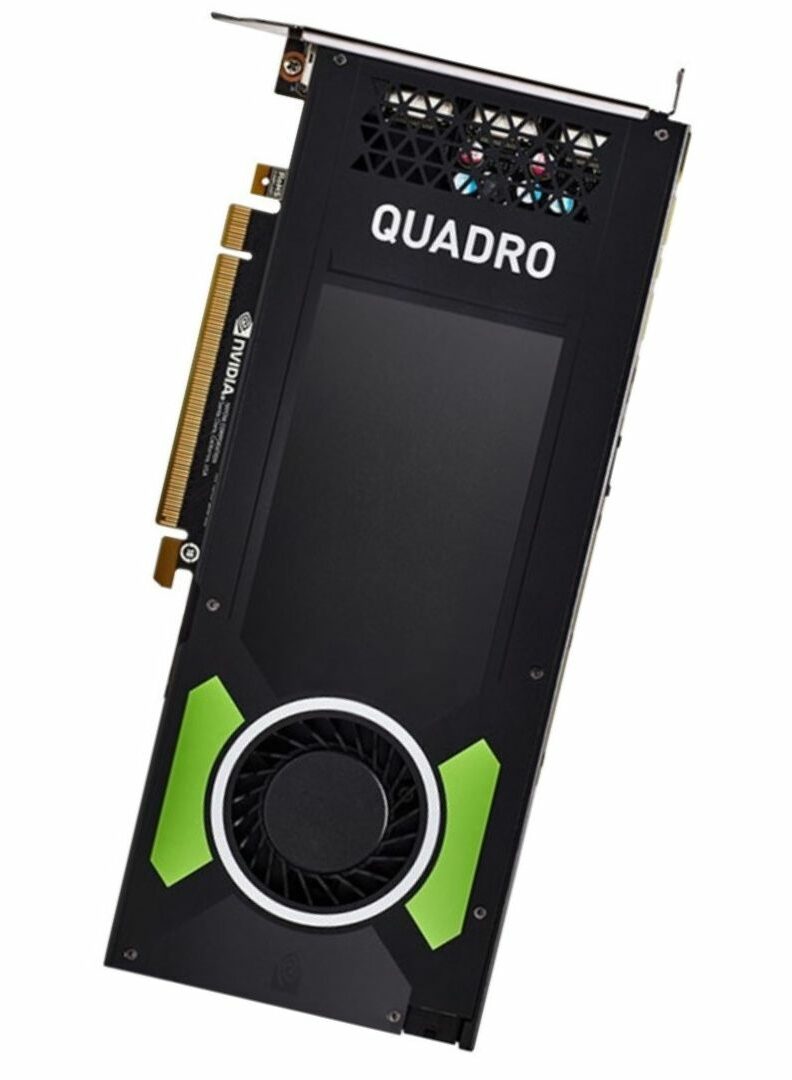 REASONS TO BUY
REASONS TO BUY
- Optimized for popular design applications
- Great performance for 3D tasks
- Won't break the bank
- Single-slot form factor
- 8GB of VRAM
REASONS TO AVOID
- Doesn't have an HDMI port
- Doesn't support Ray Tracing
Our Rating : 9.2 / 10
The Nvidia Quadro P4000 is the more affordable graphics card of the Quadro P series. It's also the least demanding. Before you buy these top of the notch workstation graphic cards like the Quadro P5000 which boasts of 16GB VRAM, 288Gbps memory bandwidth, and 2560 CUDA cores ask yourself this.
Do I have the right hardware setup to squeeze out all the juice from them? No? Then you are better off with less demanding GPUs like the Quadro P4000. It will save you a lot of o money that you can use to upgrade other components.
With an 8GB GDDR5 memory, you don't have to worry about your system running out of space for storing textures and geometry being used in renders. This GPU is fully capable of handling picture qualities of above 1080p all thanks to the 1792 CUDA cores.
All these features combined allow the GPU to comfortably process large models, scenes, and assemblies while significantly reducing the rendering time.
If you are one to evaluate your designs in VR, then the Quadro P4000 is one of the most powerful VR-ready solutions. And, it's a single slot. Unfortunately, if you are using VIVE or Oculus VR headsets you will need to use a converter since the P4000 does not come with an HDMI port.
The other good news is that this graphics card comes with 4 display ports which will help enhance graphical rendering on your 4K screens.
The GPU comes with NVidia Pascal architecture which offers better performance than cards running on the Maxwell-based architecture.
The Quadro P4000 ships with an installation disc for all its drivers that are compatible with the latest versions of OpenGL, DirectX, Vulkan, and Nvidia CUDA. This consequently means that you will have no trouble using this card to render video with all the popular design applications.
Other components included in the package include a start guide, an auxiliary power cable, stereo connector bracket, and a DisplayPort to DCI-D SL Adapter.
If you're looking for a high-end Nvidia graphics card with a lot of processing power, but you don't want to spend $1000+ for it, the Nvidia Quadro P4000 might just be the right option for you.
View On Amazon
Best Graphics Cards for 3D Rendering and Modeling for Advanced Users
At this stage, you are fully acquainted with 3D rendering and modeling. You can create complex models and need a significantly higher processing power to render your models efficiently. However, you are still not getting enough returns to invest in the highest-end GPU.
These are your options:
1. AMD Radeon Pro WX 5100
Stream Processors: 1792 | Base Clock: 713MHz | Boost Clock: 1086MHz | Memory: 8GB GDDR5 | Memory Clock Speed: 1.25GHz | Memory Bus: 256-bit | TMUs: 112 | ROPs: 32 | Max. Monitors Supported: 4 | Power Consumption: 75W | Dimensions: 2.87 x 11.50 x 9.49 in
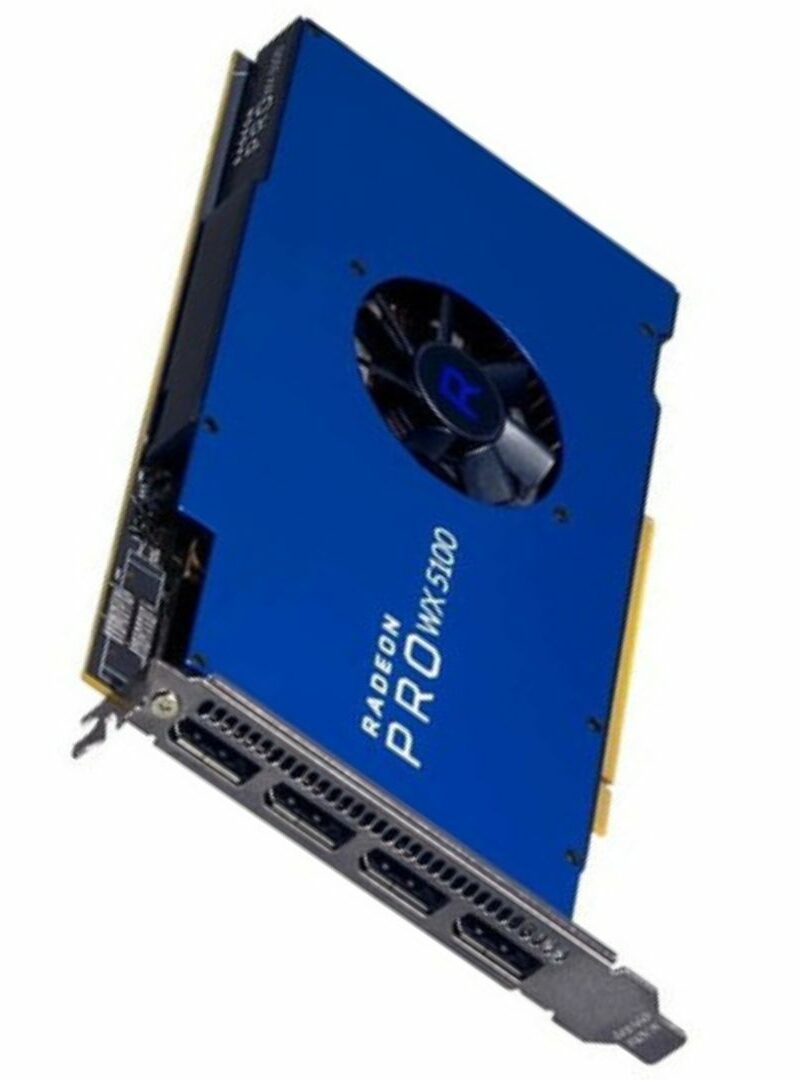 REASONS TO BUY
REASONS TO BUY
- Supports popular design softwares
- Excellent performance for the money
- Compact form factor
- Very low power consumption
- Perfect mid-range professional GPU
- 8GB of VRAM
REASONS TO AVOID
- Slightly higher price
Our Rating : 9.8 / 10
The AMD Radeon Pro WX 5100 is an awesome mid-range GPU that features a minimalistic design and small size that is characteristic of Workstation GPUs. You won't have trouble fitting it into small workstations.
Even before we can talk about the performance rating of the WX 5100, the fact that it is an upgrade of the Radeon Fire Pro series already tells you what to expect.
This GPU will be especially great for designers that do a lot of rendering using multiple monitors. It has 4 display ports on the card and makes it easy to connect to multiple simultaneous monitors.
It even comes with the necessary connectors in its package.
The Radeon Pro WX 5100 comes with an 8GB GDDR5 VRAM and a memory bandwidth of 160Gbps which is impressive. The ample memory space means the GPU can store unlimited files to be used during modeling and rendering and consequently speed up the process.
But here is the best part, the Radeon Pro WX 5100 is created using the Polaris architecture that fully utilizes all the available resources to provide unmatched computing capabilities.
And you would think that all that accelerated performance will consume a lot of power but, no. It only needs 75 watts to function. Another amazing testament to the capabilities of the Polaris architecture.
Amazingly, this graphics card allows you to run multiple operations together with 3D rendering without experiencing any drop in system performance.
This is by large thanks to the 1792 streaming processors it packs, the 256-bit bus width that facilitates easy communication between the GPU and the system, the 32 ROPs that help with rendering, and the 160Gbps memory bandwidth that ensures the fast transfer of files from the VRAM to the GPU.
Although not its selling point, this graphics card will perform exceptionally when gaming in case you want to relax your mind with a game.
Finally, I must recommend AMD for working so much to ensure popular design softwares such as Maya, Blender, and the Adobe suite to all support the WX5100. Compatibility with the software has always been a major problem for the manufacturer.
View On Amazon
Related reading: Best CPUs Under $200
2. PowerColor AMD Radeon RED Dragon RX 580
Stream Processors: 2304 | Base Clock: 1257MHz | Boost Clock: 1350MHz | Memory: 8GB GDDR5 | Memory Clock Speed: 8000MHz | Memory Bus: 256-bit | TMUs: 144 | ROPs: 32 | Max. Monitors Supported: 5 | Power Consumption: 185W | Dimensions: 10.40 x 6.18 x 2.24 in
 REASONS TO BUY
REASONS TO BUY
- Excellent budget pick for advanced users
- Great performance for 1080p
- Also great for gaming
- 8GB of VRAM
- Runs cool and quíet
REASONS TO AVOID
- Not as powerful for more demanding tasks
Our Rating : 9.7 / 10
If the AMD Radeon RX 570 is the perfect GPU for 3D rendering and modeling for beginners then its successor, the RX 580 is the perfect budget GPU for advanced users.
It is slightly pricier than the RX 570 but with a good reason. For starters, the RX 580 can reach boost speeds of up to 1350MHZ while the 570 is limited to 1286MHZ. You can try and overclock it but it's highly unlikely you will get 50Hz more than the boost speed.
When you are not working on complex 3D models and renders, this GPU cores clocked at 1257MHZ.
The RX 580 also features the same enhanced Polaris architecture with a 14nm FinFET process that makes the 570 a beast in its own right.
The AMD RX 580 has 2304 stream processors which are enough for optimum shading performance and facilitate reduced render time for your models. The 32 ROPs are the same as you will find in the RX570 but the RX580 has more texture units, 144, which makes it more efficient in adding texture to your models.
With 8GB of GDDR5, this GPU can easily handle more texture packs and other files that you will need to complete your models and renders.
The PowerColor AMD Radeon RED Dragon RX 580 offers great performance for 3D work, while being equally as good in other tasks, such as gaming. Overall, this graphics card has a lot to offer for a very low price.
View On Amazon
3. ASUS Dual GeForce RTX 2060 O6G Evo
CUDA Cores: 1920 | Base Clock: 1365MHz | Boost Clock: 1785MHz | Memory: 6GB GDDR6 | Memory Clock Speed: 14000MHz | Memory Bus: 192-bit | TMUs: 120 | ROPs: 48 | Max. Monitors Supported: 4 | Power Consumption: 175W | Dimensions: 9.5 x 5.1 x 2.1 in
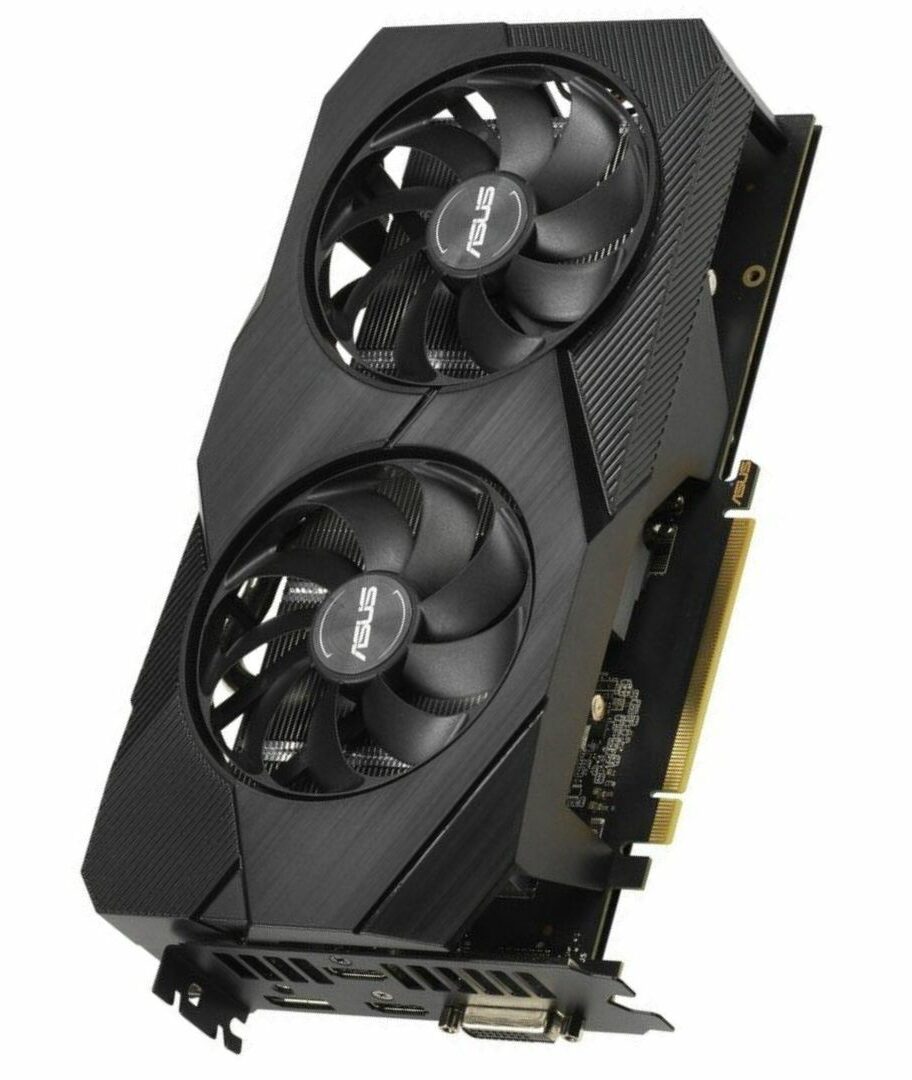 REASONS TO BUY
REASONS TO BUY
- Supports Ray Tracing and DLSS
- Great performance for the money
- Also great for gaming
- Attractive design
REASONS TO AVOID
- Only 6GB of VRAM
- Issues with overheating
Our Rating : 9.5 / 10
What do you do if you want to get the processing power of the RTX 20 series but can't afford the RTX 2080? You purchase the RTX 2060. It's not the cheapest graphics card in the market but it is the cheapest of the RTX series.
At less than $350 you will get to test the full capabilities of the ray tracing and DLSS technology that gamers and designers alike can't stop talking about.
It's hardly unlikely that you will find another graphics card in this price range that offers better performance while also remaining future proof.
The GeForce RTX 2060 comes with 6GB of GDDR6 VRAM that facilitates faster modeling and rendering by storing the most frequently used files including textures, geometry, and shapes.
This graphics card is set up very similarly to its successor the RTX 2070 which has a noticeable price difference. This is why you will not hear me vouch for the RTX 2070 since I don't believe the increased price is justified.
But that's just me. If I have to lose a few frames per second to save $200 then I will do it. That's the price you pay for rendering your models using the 1,920 CUDA cores of the RTX 2060 as opposed to the 2,304 CUDA cores of the RTX 2070.
If you want the full fps then the RTX 2070 is a good option and it also gives you 2GB more VRAM than the 6GB offered by the RTX 2060.
Otherwise, both graphic cards come with a Tu106 processor, an 8 pin connector, and two fans for efficient cooling. The latter is great for preventing thermal throttling. This is when the core clock speed drops when the GPU gets too hot.
The GeForce RTX 2060 already comes overclocked by ASUS and offers a boost core speed of 1785MHZ.
View On Amazon
You may also like: Best Motherboards Under $100
4. PNY Nvidia Quadro P2000
CUDA Cores: 1024 | Base Clock: 1076MHz | Boost Clock: 1480MHz | Memory: 5GB GDDR5 | Memory Clock Speed: 1752MHz | Memory Bus: 160-bit | TMUs: 64 | ROPs: 40 | Max. Monitors Supported: 4 | Power Consumption: 75W | Dimensions: 7.7 x 4.4 x 2 in
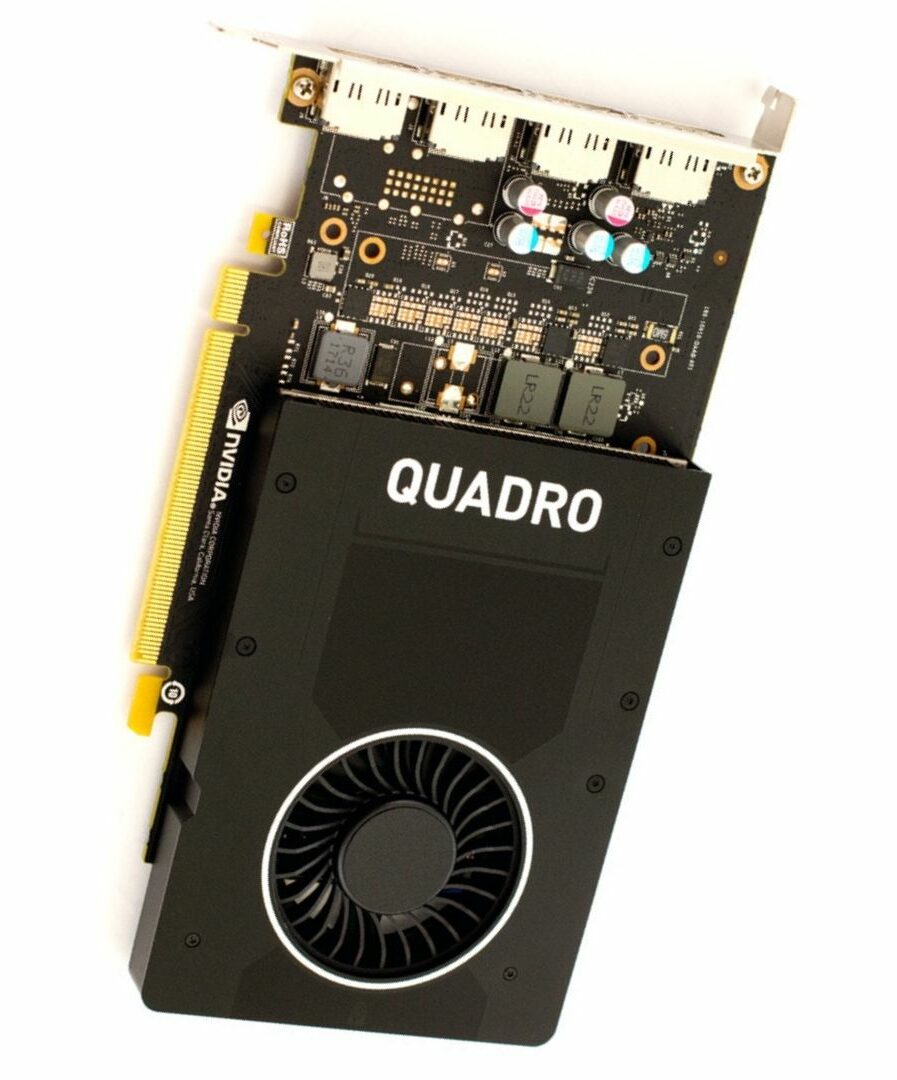 REASONS TO BUY
REASONS TO BUY
- Low power consumption
- Optimized for a lot of 3D applications
- Compact form factor
- Great performance
REASONS TO AVOID
- Only 5GB of VRAM
- Higher Price
- Doesn't support Ray Tracing
Our Rating : 9.4 / 10
This is an entry-level GPU in terms of price that will be great for mid-range rendering, CAD work, and design. However, if you overwork it by pushing too much detail to be rendered then the Quadro P2000 will give you problems.
The GPU has a base clock speed of 1076 but when operating high loads it can reach up to 1480MHZ.
5GB of GDDR5 VRAM is pretty decent and unless you are modeling and rendering highly complex and detailed objects, it will store all your files. The memory bandwidth of 140Gbps is impressive and will help achieve full utilization of the GPU by ensuring that files are being loaded into the GPU from the VRAM as fast as they are being processed,
This will consequently lead to decreased render times for your models.
The P2000 also comes with four display ports that will comfortably power four display monitors. That is unless the playback is in 4K set at 144HZ in which case you can only power two monitors.
This graphics card only demands 75W to power and that is recommendable for a Quadro workstation GPU running on the Pascal architecture.
View On Amazon
Best Graphics Cards for 3D Rendering and Modeling for Beginners/Hobbyist
At this stage, you don't want to spend too much on a graphics card because your performance needs are low or you are not sure 3D rendering and modeling is something you will pursue in the long term. Still, you need a powerful GPU that won't need immediate replacement as soon as things start becoming serious.
These are your options:
1. XFX Radeon RX 570 RS XXX Edition
Stream Processors: 2048 | Base Clock: 1168MHz | Boost Clock: 1286MHz | Memory: 8GB GDDR5 | Memory Clock Speed: 7000 MHz | Memory Bus: 256-bit | TMUs: 128 | ROPs: 32 | Max. Monitors Supported: 6 | Dimensions: 9.57 x 4.88 x 1.57 in
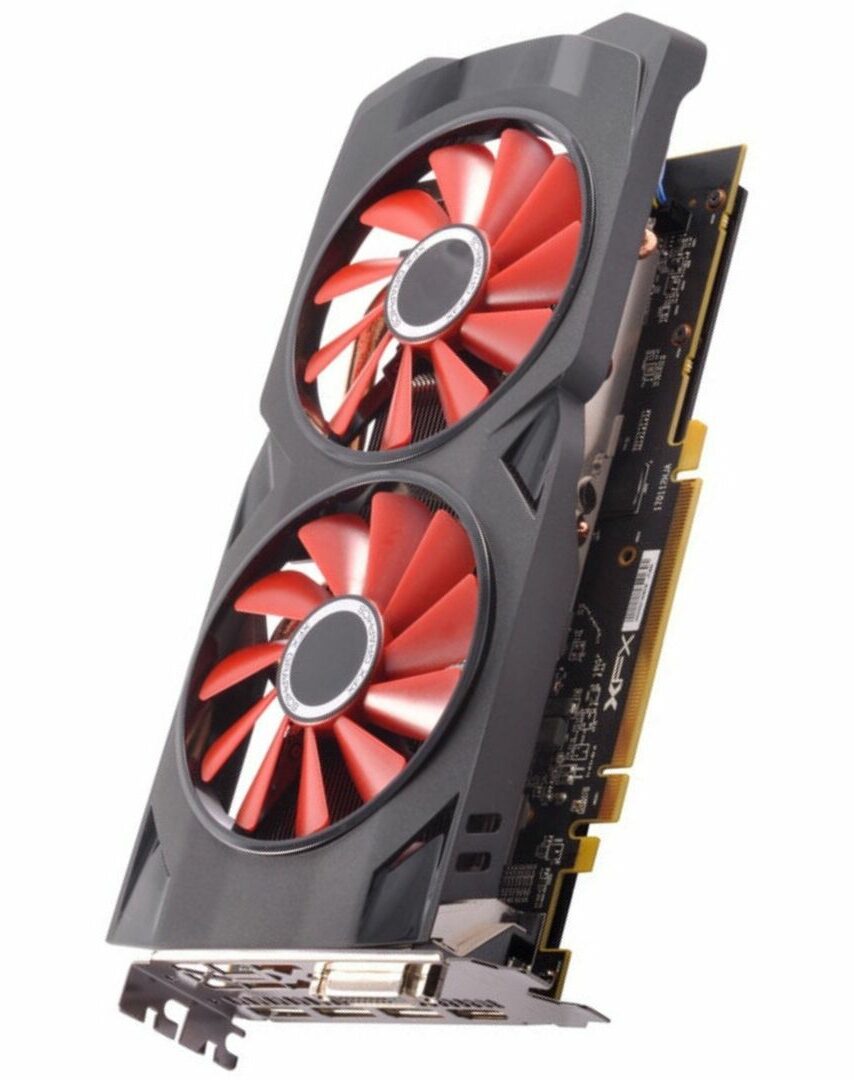 REASONS TO BUY
REASONS TO BUY
- Excellent value pick
- 8GB of VRAM
- Perfect for 1080p resolution models
- Also great for gaming
REASONS TO AVOID
- No ray tracing or DLSS
- Not suited for UHD
Our Rating : 9.8 / 10
Of course, our top recommended graphics card for beginners was always going to be an AMD GPU. It's the only manufacturer that can offer a less than $200 graphics card that is high-performing enough to be used for 3D modeling and renders.
The Radeon RX 570 features the same Polaris GPU architecture that made the RX 470 wildly popular but now with some improvements.
For starters, the GPU comes with 2048 stream processors which guarantee increased rendering speeds and better shading of your 3D models. This is further reinforced through an impressive base core speed of 1168MHz. At maximum workload, this speed can go up to 1286MHz.
The RX 570 has 128 texture mapping units to help fill your models with a texture more quickly and 32 Render Operations Units for more refined renders.
With 8GB of GDDR5 VRAM, you never have to worry about running out of space for files that you are using for modeling and rendering at this level. These files are moved from the VRAM to the GPU at the rate of 7000MHz which is super fast.
The Graphics card connects to the system through a 256-bit bus.
The Radeon RX 570 does not come with ray tracing and DLSS technologies but that's not surprising considering its price point. The similarly priced Nvidia GTX 1050 does not come with these technologies and it gets butchered by the RX 570.
If I was to compare this GPU with an Nvidia counterpart then it would be the higher-priced GTX 1060
On the downside, this GPU will struggle to render models with resolutions higher than 1080p. This is why I think it will be perfect for beginners since it's unlikely you will be creating ultra HD models.
Moreover, the XFX variant of this GPU that I'm recommending comes with three additional technologies that I should mention.
The first is the BIOS controlled overclocking feature called XFX True clock. Delegating the overclocking task to hardware components rather than software means that your clock speeds will remain stable even when the overall performance of your PC is down.
The second is the XFX OC+ capable feature that allows you to boost your core speeds beyond those of the XFX True clock.
Lastly, XFX allows you to not only cool your GPU but also your VRM and Memory components for maximum efficiency.
I doubt you will find another graphics card with such a rich feature set at such a low price.
View On Amazon
2. MSI GeForce GTX 1660Ti Ventus XS 6G OC
CUDA Cores: 1536 | Base Clock: 1700MHz | Boost Clock: 1830MHz | Memory: 6GB GDDR6 | Memory Clock Speed: 12.000MHz | Memory Bus: 192-bit | TMUs: 96 | ROPs: 48 | Max. Monitors Supported: 4 |Power Consumption: 120W | Dimensions: 8.03 x 5.04 x 1.65 in
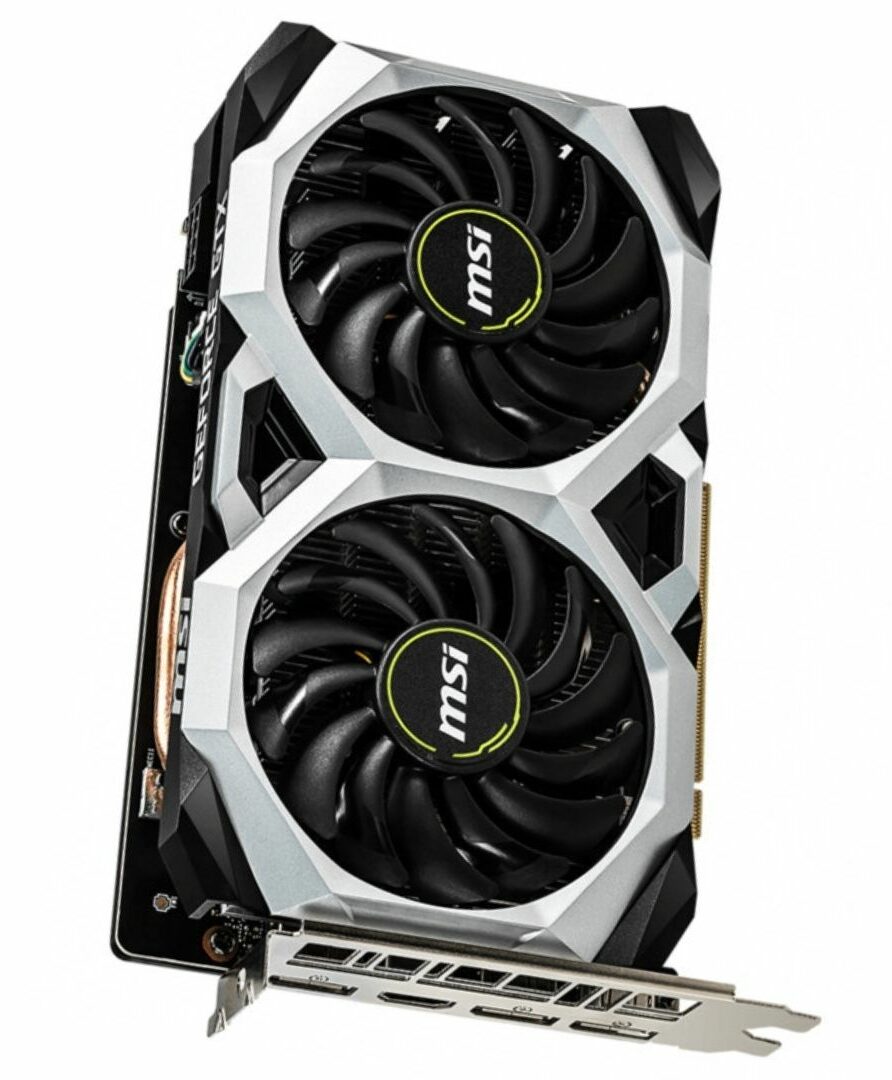 REASONS TO BUY
REASONS TO BUY
- Competitive pricing
- Excellent for gaming as well
- High memory clock speed
- Excellent Nvidia budget pick for 3D work
- Great cooling solution by MSI
REASONS TO AVOID
- No ray tracing and DLSS
- Only 6GB of VRAM
Our Rating : 9.7 / 10
The Nvidia 1660ti represents a comeback for the 1000 series. The GPU comes with the highly-rated Turing architecture. However, unlike the TU102 core in the RTX series, the TU116 core in the GTX does not feature tensors and RT partitions.
What this means is that you won't enjoy the ray tracing feature that enables GPUs like the Nvidia RTX 2060 to render light rays in a realistic manner. Also, you won't have DLSS features.
What you will have, however, is a 12nanometer FinFET process that guarantees excellent shader performance like in the GTX 1060. To assist with the shading, the GTX 1660 Ti comes with 1,536 CUDA cores that also work to reduce your render time.
At normal workload, this GPU offers a base clock speed of 1700MHZ but this can go to up to 1830MHz as the workload increases. This will lead to a noticeable difference in your rendering time and better shading performance.
This graphics card has a 6GB GDDR6 which I would say is more than enough for most of the modeling and rendering work you may have as a beginner. Still, it would have been great to see more VRAM considering that almost all the other graphics cards that use GDDR6 come with at least 8GB of data.
Interestingly, even with all that boosted performance, the GTX 1660 Ti is very low on power consumption. It requires 120Watts to power but I recommend you use a 450W power supply unit for maximum efficiency.
The MSI variant of the GTX 1660 Ti that I'm recommending affords you some extra features like the Afterburner Overclocking utility that can be controlled wirelessly via Android and iOS devices.
It also ships with the stock MSI dual fan system that promises more efficient cooling through improved focus airflow and static pressure.
Finally, this GPU also has all the other Turing features including simultaneous int and fp operations, rapid fp 16 packed math, and improvement in the cache and hierarchy.
View On Amazon
3. PNY NVIDIA Quadro K1200
CUDA Cores: 512 | Base Clock: 1058MHz | Boost Clock: 1124MHz | Memory: 4GB GDDR5 | Memory Clock Speed: 5000MHz | Memory Bus: 128-bit | TMUs: 32 | ROPs: 16 | Max. Monitors Supported: 4 | Power Consumption: 45W | Dimensions: 6.30 x 3.50 x 2.70 in
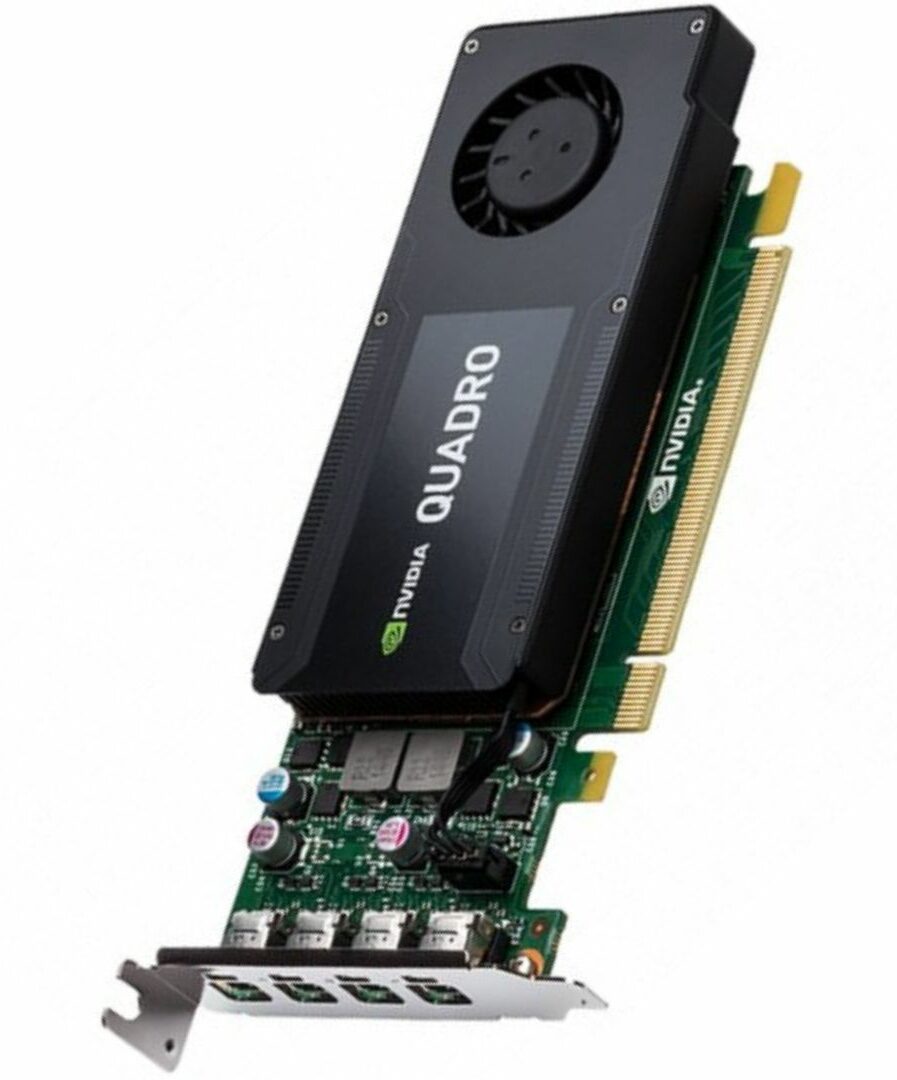 REASONS TO BUY
REASONS TO BUY
- Compact form factor
- Very low power consumption
- Comes optimized for AutoCAD and Solidworks
- Reasonable price for a professional GPU
REASONS TO AVOID
- Old architecture
- Lower performance
- Only 4GB of VRAM
Our Rating : 9.5 / 10
This is another low-budget GPU that will be perfect for 3D rendering at the beginner/hobbyist level. The first thing you notice about the PNY Nvidia Quadro K1200 is its minimalistic design and small frame.
This is something we have come to expect about workstation GPUs and it's a good thing because the Quadro K1200 can fit in just about any workstation.
It comes packed with 512 CUDA cores which as you might realize are not much. The effect is that it will take significantly longer to render your models and will have trouble processing models that have a lot of detail in them.
It doesn't help that the GPU runs on the Maxwell architecture which is like two generations behind. However, since I'm recommending this GPU for beginners, this will, most likely, not be a problem.
And if that's true then you will also find the 4GB of GDDR5 VRAM adequate for storing any data that you are using for your 3D modeling and rendering. The data is moved between the VRAM and the GPU at 80Gbps.
If you use AutoCAD or SOLIDWORKS for your 3D works, you will have no trouble realizing photorealistic renders since the graphics card has been optimized for the software.
With 32 texture mapping units, the Quadro K1200 will apply textures to your models at acceptable speeds and the 16 ROPs help improve the quality of your final renders.
At normal workload, this GPU has a core speed of 1058MHz which will go up to 1124MHz as the load increases.
If you use multiple screens then you will be happy to know that the K1200 features 4 mini-display ports and includes four mini-display to display adapters. Also included in the package is a full-height mounting bracket and a driver installation disk that I wouldn't recommend that you use since it is outdated
If your package does not come with the full-height bracket as I have seen some users complain, you can purchase NVS 510 brackets. They are the same.
The Quadro K1200 is often compared to the Nvidia GTX 980 and while it wouldn't match the gaming power of the GTX, it is the better performer in terms of CAD/CAM rendering.
Even with the various limitations, you will not find a workstation GPU with this kind of memory performance at the same price as the Quadro K1200.
View On Amazon
Why You Need The Best Graphics Card for 3D Rendering and Modeling
Various activities such as surface modeling, extrusions, lofts, sweeps, and shelling are complex and demand a lot of resources from your system. A GPU will take part of the workload from your CPU to facilitate a smoother experience.
Some modeling software allow you to work on your models in a realistic view instead of the basic wireframe and conceptual views. Having a powerful GPU will prevent your software from lagging during this process.
A great GPU will significantly reduce the amount of time it takes to render your models especially the more complex ones. Unlike CPUs that feature few complex cores, GPUs come with hundreds or even thousands of specialized cores that split the rendering task between them.
It will facilitate smooth zooming and rotating. You have no idea how much toll these simple processes take on your system. And how many times will you perform the tasks on your models? Uncountable.
A great graphics card will also make the process of assembling models from separate components faster and effortless.
Unfortunately, picking the right GPU to use for your models and renders is not easy. There are so many available solutions and a majority of them have been created with gamers in mind.
Wait, you mean that gaming cards aren't the perfect cards for rendering and modeling?
Gaming Graphic Cards Vs Professional Graphic Cards
Games run highly optimized geometry to achieve maximum performance which means they don't push as many polygons through your graphics card as your 3D models are.
As a result, 3D modeling and rendering cards may need more VRAM, higher memory bandwidth, and more processing power than gaming cards.
This level of graphical computation can only be achieved by workstation graphic cards. These are also the best cards if you want something to aid in AI and scientific computation.
Pro Tip: Before purchasing a GPU check the system requirements for the software you use for 3D modeling and rendering.
For instance, if you want to effectively render raw HD or 4K videos on adobe premiere pro then you will require at least 2GB of GPU VRAM.
Read also: Best PSU Under $50
Factors to Consider Before Purchasing a Graphics Card for 3D Modeling and Rendering
Nvidia vs AMD
Nvidia and AMD are the two main graphics card manufacturers and it can be hard deciding which of the two suits you best. AMD produces mid-level consumer GPUs that provide a balance between cost and power. The AMD Radeon Pro and Firepro series are the best-recommended solutions for rendering.
Nvidia on the other hand is recognized in terms of performance and efficiency. Nvidia's Titan and Quadro series are the recommended solutions for 3D design and rendering.
You may also come across GPUs from other vendors such as MSI, ASUS, EVGA, and Gigabyte. These are all GPUs made by either Nvidia or AMD. These vendors just take them and add customizations such as unique coolers, different I/O ports, and in some cases, higher clock speeds.
GPU Chip Architecture
This refers to the technology used to build the GPU. Nvidia and AMD develop new technologies about every two years and each development comes with more advanced features and a better ability to utilize the available GPU resources.
For instance, an Nvidia card built using the latest Turing architecture with 2000 cores will be more efficient than a graphics card with the same number of cores built with the less recent Pascal architecture.
The Nvidia Turing architecture is the most recognized when it comes to providing professional-level 3D modeling and rendering performance. For AMD, the Polaris and Vega architecture are what you should be looking for in your GPU.
GPU VRAM
The GPU Video Memory (VRAM) should not be confused with the system RAM that is attached to your work station's motherboard. However, it functions the same way.
The VRAM is used to temporarily store data like textures, geometry, and shapes that you are using for 3D modeling and rendering so that they can be accessed easily and quickly.
The more VRAM a GPU has the more data it can store.
Still, on memory, the memory bandwidth is another important metric to look at when choosing the best graphics card for 3D modeling and rendering. It's a measure of how fast data is sent from the VRAM to the GPU and is calculated in Gigabits per second.
GPU Bus
The bus is the component used to connect the GPU to its machine and its width determines how fast data is sent between the GPU and your system.
GPU Clock
This is also known as the core clock and it's a measure of how fast the GPU cores are. The faster the GPU clock speed the faster the rendering process. Most cards will come with a base clock which is the speed at which card cores run normally and a boost clock which is the maximum speed a card can reach when under heavy load.
Note that the GPU clock speed can only be used to compare graphic cards in the same generation. Using this metric to compare the performance of GPUs in different generations would be inaccurate because they run on a different architecture.
And like I mentioned earlier, the card with the advanced architecture will have better utilization of the available resources.
Number of cores
The more cores a graphics card has the faster the rendering process. The GPU cores are also the components responsible for displaying shaded in 3D objects and scenes and therefore, you might hear them referred to as shaders.
Nvidia uses a custom programming language called CUDA for its cores and it's also the name given to the physical cores.
On the other hand, AMD cores are known as stream processors and they run on the OpenCL programming language.
Again due to reasons I already mentioned, it would be inaccurate to compare the performance of graphic cards from different generations based on the number of cores.
Texture Mapping Unit (TMU)
This is the component that helps in applying textures to your 3D models. The more TMUs your graphics card has, the faster it fills your models with texture.
Render Operation Unit (ROP)
ROPs help to improve the accuracy of ray-tracing and anti-aliasing. The Render Operation Units also help your GPU to display all the pixels during rendering regardless of the texture. The more the ROPs that your card has, the better the rendering results.
Cost
After all, is said and done, your budget is what will determine the graphics card you get for your 3D modeling and rendering workstation.
However, it is my hope that with all the information I have given you will know when to stretch yourself a bit to get the best GPU for your workload.
Graffix Video Card 3d Design
Source: https://pcmecca.com/best-graphics-cards-for-3d-rendering-and-modeling/
Posted by: murraybehere.blogspot.com

0 Response to "Graffix Video Card 3d Design"
Post a Comment